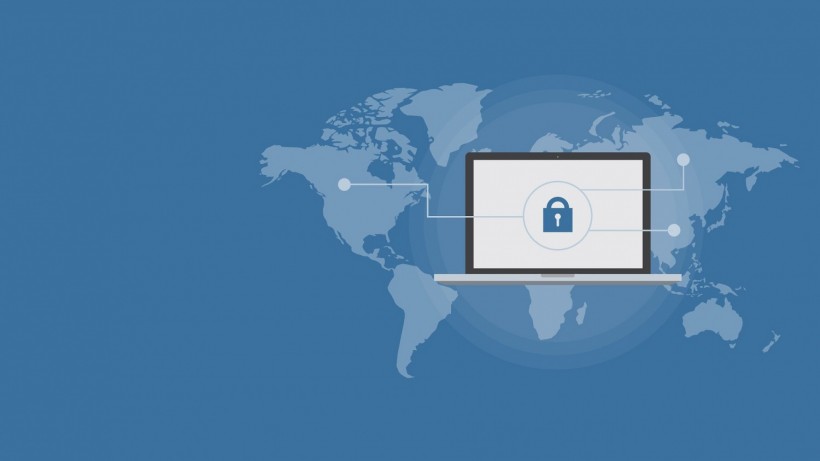
(Photo : pixabay)
Towards the end of the previous year, the USA Federal Bureau of Investigation advised travelers to avoid their cellular devices, laptops, and tablets to free Wi-Fi while they are on their journey for the holiday season.
I have a simple opinion when considering connecting to a free Wi-Fi network and that is a big NO. Whether it is an airport or local coffee shop, just don't switch to public Wi-Fi networks. The flaw discovered in WPA2, the encryption standard that protects all the new Wi-Fi networks, spread the possibility that anyone can access your information if you use a public network. It includes information that was assumed to be encrypted.
Today's Wi-Fi standards are flawed and can't be trusted anyway. The most significant risk of free Wi-Fi is the ability of hackers to get in between the user and the connection point. You directly sent your information to the hacker instead of talking to the hotspot. The attacker has access to every piece of information you send either it is business card details, business data, emails, phone numbers and much more. Once a hacker has all these details, they can use it in any way they want.
To provide more insight into this topic, in the next part of the article, we'll be discussing the threats that make free Wi-Fi vulnerable, followed by methods by which we can protect ourselves.
Threats Associated With Public Wi-Fi
To set up or connect an unsecured Wi-Fi connection might seem easy, but this convenience comes at the cost of security. The possible risks are much worse when you use the public network for any business purpose without considering the sensitivity of the business data. Now, we'll discuss the threats that make public Wi-Fi vulnerable:
1. Man-in-the-Middle
One of the most prevalent types of Wi-Fi security threats is called man-in-the-middle attacks. Under such attacks, hackers invade the data packages as they travel between the victims. The most common method used in MitM attacks is snooping and prying. Hackers will intercept the messages between two users who think they are talking directly to one another. All those connections that don't have the mutual authentication protocols at both ends are vulnerable to these sorts of attacks as the authentication protocols are designed to prevent such attacks.
2. Rogue Wi-Fi Networks
Several threats fall into this category, but to give readers a more clear vision, we'll include the most significant form of rogue Wi-Fi networks. Here it means that a hacker is setting up a Wi-Fi network that locks down the legitimate and trusted system. You can quickly identify such fake networks because they mention things that make them look appealing like ''No Password'' or ''Free Access''. Avoid such systems as much as you can. If you're accessing a public Wi-Fi in a restaurant, then make sure you get a password in place for the customers.
3. Illegal Usage
Using an unsecured public Wi-Fi connection can put your data on illegal usage by an unauthorized user. The illicit use includes illegal file transfers, downloads, use of networks to spread viruses, and also the spread of some severe cybercrimes. As the unknown hacker will be using your system, any sort of investigation will lead back to your network. In this case, your company will be responsible for any charges that these crimes might impose even though none of your users did the crimes.
4. Endpoint Attacks
Within a Wi-Fi network, every user, along with the Wi-Fi provider, is known as the endpoints. Since a lot of the Wi-Fi security threats come via the connection itself, and the channel used to transfer the data packages, the endpoints of the links are vulnerable to attacks. An easy way hackers can access your laptop is by setting a fake website or entering on pages that give them access to the entire network. If the entry point is not on your computer, you might not be aware that a cybercriminal has acquired access to the network and hence your system too.
5. Malicious Attacks By Ad Hocs:
Ad hocs are peer-to-peer networks that directly connect two computers. When remote workers use public Wi-Fi networks so their devices are set to discover new systems, making it easy and possible for the hackers to connect directly to them.
6. Sniffing and Snooping
Another public Wi-Fi threat that hackers use is special software kits. These kits allow cybercriminals to spy on the Wi-Fi signals. It allows attackers to access everything that remote workers are doing online, enabling them to steal the login details and this also results in hijacking the accounts.
How to Secure Your Online Presence?
By using vulnerable public Wi-Fi, you allow others to have access to your encrypted messages, private emails, and unsecured logins. Obviously, by this, a cybercriminal can use this access to compromise your device as well.
Since the internet is becoming easily accessible either by mobile devices or gadgets, data security has emerged as a burning concern. Wi-Fi providers are obliged to secure their user's information while they use their networks; however, at the same time, users' should be well aware of the risks and threats hovering around them. In my opinion, the great responsibility of data protection is in the hands of the users themselves.
In the age of technological advancement, there is one way by which users can keep their information protected from the threats of public Wi-Fi. By only using a VPN of a reliable provider, you can prevent the dangers of public Wi-Fi. But, it is still essential that you better understand the risk of exposing your data while being connected to public Wi-Fi networks.
Set up a VPN network for your organization network. A VPN is an efficient tool that works like a tunnel and protects you from prying eyes. The remote workers log in to the VPN network so they can enjoy a secure connection and their activities will be hidden from the eyes of the hackers.
Besides using a VPN, there are other ways too by which you can protect yourself. Following mentioned below are the steps that everyone must take before they use a public Wi-Fi network:
-
Start using HTTPS for your applications and websites. These websites provide excellent security and protect the user's personal information and data like login credentials and bank account details.
-
Make sure that all the remote workers have a firewall enabled on their devices all the time.
-
Make sure that your network, along with worker devices, are covered by reliable anti-malware software including anti-sniffing protection too.
-
Suggest the remote workers turn off their Bluetooth discoverability settings and Wi-Fi auto-connect settings. Doing this prevents hackers from gaining direct access to the user's device without letting them know.
-
Use the mobile hotspot provided by the mobile carrier or even tether laptops to a mobile device and avoid using public Wi-Fi together.
-
Draft strict policies regarding the points mentioned above. Also, educate the workforce so they can understand the risks and the importance of taking preventive steps.
Parting Words
To conclude, there is a famous saying in the cybersecurity field that there are three types of people in this world. Firstly, ones who have been hacked, secondly those who are going to be cut, and lastly who are being hacked at present and they just don't know about it yet. The better you protect yourself the more chances that you minimize the potential risks and dangers. The Public Wi-Fi networks always remain an easy target for hackers, with several potential victims being unaware of all their information getting exposed. Hopefully, the guide mentioned above helps you in reducing the chances of becoming one of the targeted victims.
* This is a contributed article and this content does not necessarily represent the views of hngn.com








